Over the last several weeks, you’ve read some of the adventures of our summer 2014 interns. As they, and countless other students, head back to those hallowed halls of higher education, we here at the State Historic Preservation Office thought we’d search through our vast collection of historic resource files, and highlight a selection of Pennsylvania state schools listed in the National Register of Historic Places. While there are fourteen schools that make up the Pennsylvania State System of Higher Education, and while most possess individual buildings or historic districts that have been determined eligible for the National Register at one time or another, only six schools have historic resources listed in the National Register. The following is a quick glance at these historic schools, with a sampling of photographs submitted with the National Register nomination at the time of listing. To read the full National Register nomination, which is posted to our CRGIS, click on the link after each school’s name. So, be quiet, sit up straight, spit out that gum, and welcome back to school!
Edinboro University (Academy Hall – key# 079932)
Edinboro’s Academy Hall is one of the oldest education related buildings still standing on any of the 14 state school campuses. Built in 1857, and listed in 2006, the Italianate styled Academy Hall was the result of Edinboro community leaders’ push to create a post-elementary school level of education in the region. That same year, Pennsylvania passed the Normal School Act, which was meant “to provide for the training of teachers for the Common Schools of the State.” Soon, State Normal Schools would pop up all over Pennsylvania. The backers of Academy Hall immediately set their sights on expanding the Academy, to create a larger State Normal School. Among the state requirements for a State Normal School, institutions needed a full campus with a library, classroom spaces, assembly hall, dining hall, and dormitories. Academy Hall soon became part of the new Northwestern State Normal School. By 1880, Academy Hall was moved to a new location on campus, and housed the school’s Model School, in which student-teachers received training in a real classroom environment. It later was used by school literary societies, known as Literary Hall. By the time of its National Register listing, an effort was underway to restore the building in time for the school’s 150th Anniversary in 2007.
Shippensburg University (Cumberland Valley State Normal School Historic District – key# 077457)
Founded in 1871 as the Cumberland Valley State Normal School, Shippensburg University is unique among all state schools, in that it still retains its entire ‘normal school era’ campus. Listed in 1985, the Cumberland Valley State Normal School Historic District’s collection of architecturally significant buildings were all built during the school’s earliest days from 1870 to 1915. Gilbert Hall, built between 1911-1915, was originally intended to be used as primary grade classroom space in which CVSNS students could be trained as teachers in a real world environment. The Renaissance Revival styled building is reflective of the Progressive Era of education that was occurring in the early 20th Century. Today the building is home to classrooms and offices. In 1908, a residence for the school’s principal was completed. Known today as the Martin House, this residence was designed and built in the Classical Revival style. Today, the Martin House is still used as the home of the acting University President. The 1895 Romanesque Revival Stewart Hall originally housed the school’s gymnasium, and stands out noticeably on the campus’ hilltop location as visitors approach from town on Prince St. Built in 1894, Horton Hall was originally the women’s dormitory. In recent years, it has become home to classroom space and offices. Ultimately, the crown jewel of the campus, and the historic district, is Old Main. Originally constructed in 1873 in the Second Empire style, Old Main housed everything from dormitory space to laundry to classrooms to offices. Several of these functions were moved to neighboring buildings later after their construction. In 1895, the building was dramatically remodeled in the Classical style, receiving an entirely new roof line. Together, with its high level of integrity, original placement and orientation, and associated hillside open space, the Cumberland Valley State Normal School HD truly gives visitors a glimpse into the world of higher education during late 19th and early 20th centuries.
Cheyney University (Melrose Cottage – key# 079258)
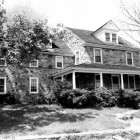 Built in phases starting ca. 1785, Cheyney’s Melrose Cottage was listed in the National Register in 1986. In its earliest days, the stone farmhouse was located on the farm of Sarah Cheyney (Vernon) and Jacob Vernon, long before Cheyney University grew up around it. In the late 19th Century, the house was home to Mary Cheyney, a prominent local doctor who not only was believed to be the only female physician in the area, but also taught hygiene and other preventative health measures to the rural population. In 1902, the property was purchased by the Institute for Colored Youth, which was the oldest school for the higher education of African American students in the nation. Moving the Institute from Philadelphia to the Cheyney farm, its name was soon changed to Cheyney State Teachers College. In 1913, the cottage became home to Dr. Leslie Pickney Hill, who, as the school’s director, worked to change curriculums, grow admission, advocate for African American higher education, and helped raise Cheyney to a level of national significance.
Built in phases starting ca. 1785, Cheyney’s Melrose Cottage was listed in the National Register in 1986. In its earliest days, the stone farmhouse was located on the farm of Sarah Cheyney (Vernon) and Jacob Vernon, long before Cheyney University grew up around it. In the late 19th Century, the house was home to Mary Cheyney, a prominent local doctor who not only was believed to be the only female physician in the area, but also taught hygiene and other preventative health measures to the rural population. In 1902, the property was purchased by the Institute for Colored Youth, which was the oldest school for the higher education of African American students in the nation. Moving the Institute from Philadelphia to the Cheyney farm, its name was soon changed to Cheyney State Teachers College. In 1913, the cottage became home to Dr. Leslie Pickney Hill, who, as the school’s director, worked to change curriculums, grow admission, advocate for African American higher education, and helped raise Cheyney to a level of national significance.
West Chester University (West Chester State College Quadrangle Historic District – key# 001600)
The West Chester State College Quadrangle Historic District, listed in 1981, encompasses the original twelve acre campus property of what was originally known as the West Chester State Normal School. The placement of the seven buildings around the edges of the historic campus parcel create the significant central ‘Quad’, which became a notable outdoor gathering space for students and faculty for over one hundred years. While the school’s original Old Main (built in 1871) is no longer standing, five of the seven National Register contributing buildings in the district were built between 1893 and 1940. These include: Recitation Hall (1893), the Model School (Ruby Jones Hall 1899), the old Library (1904), Phipps Memorial Building (1927), and Anderson Hall (1940). New Main and the Francis Harvey Green Library and Annex were built between 1967 and 1975. Each of the earlier buildings are distinctive Revival styles, all of ‘rock-faced serpentine greenstone’ clad with Indiana Limestone. Their substantial size and orientation around the open Quad continue to convey the feeling and association of a late 19th-early 20th Century college.
California University of Pennsylvania (Old Main – key# 001185)
California’s Old Main was individually listed in the National Register in 1974 for not only its association with one of Pennsylvania’s early Normal schools, but also for its regionally distinctive Romanesque Revival architecture. Completed in 1870, the building contained the chapel, dorm and classroom space, and administrative offices. Originally built in the shape of a cruciform, with the unique dual towered central entrance, the northern wing was demolished in the late 1960s in order to make way for Frich Hall.
Indiana University of Pennsylvania (Breezedale House – key# 000647 & John Sutton Hall – key# 000651)
Just like Cheyney University’s Melrose Cottage, Indiana University’s Breezedale House has a history that starts long before its association with the school. Built in 1868, and listed in the Italianate mansion was once the home of prominent Indiana (PA) resident, businessman, and attorney James Sutton. In 1899, the house was purchased by the Honorable John P. Elkin, who was the Deputy Attorney General of Pennsylvania, a former State Legislator, and a future Pennsylvania Supreme Court justice. Elkins had also attended Indiana State Normal School, and later was a member of the school’s Board of Trustees. After his death in 1915, Breezedale came under the ownership of the school. They soon retrofitted it include space for dorms, and today the house is home to the IUP Alumni Association. IUP has even created a virtual history tour of the building that you can view online.
Indiana University is also home to the National Register listed John Sutton Hall; listed in 1975. One of the earliest buildings built on campus (1875), Sutton Hall at one time housed the school’s entire operation, much like other schools’ ‘Old Main’. Today, the Hall is also home to the University Museum. Situated upon a knoll looking east, out over the town of Indiana, the massive Italianate styled Sutton Hall helps conveys the history and significance of the school.
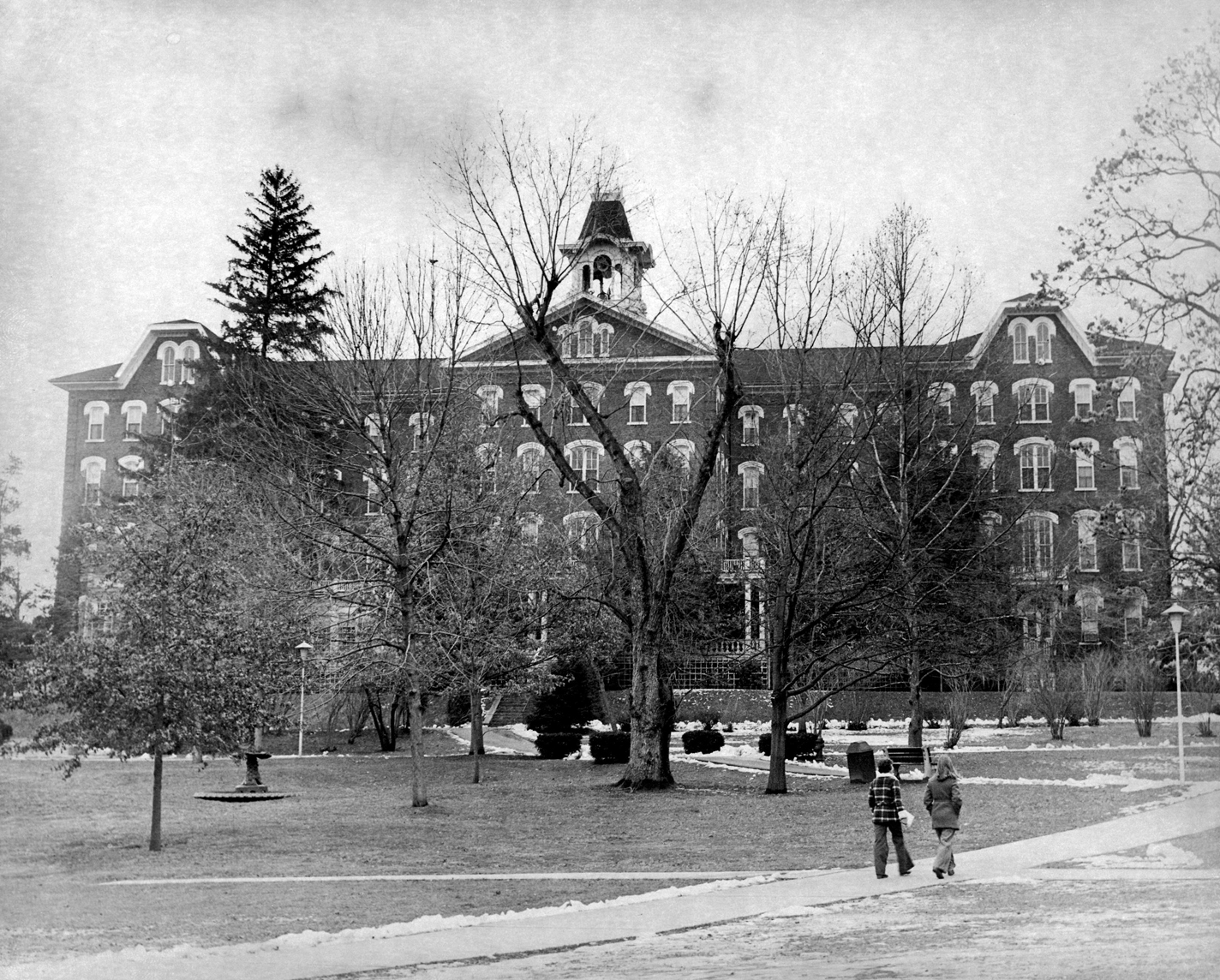
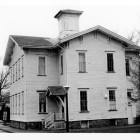
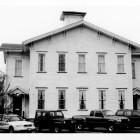
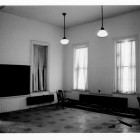
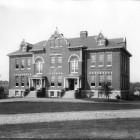
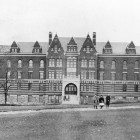
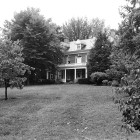
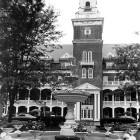
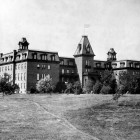
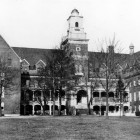
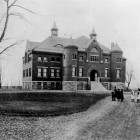
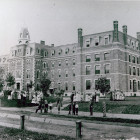
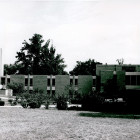
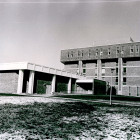
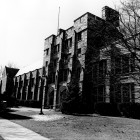

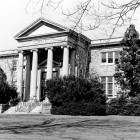
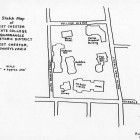
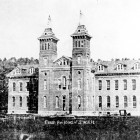
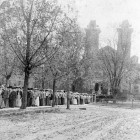
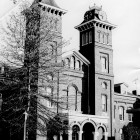
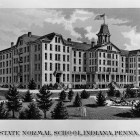
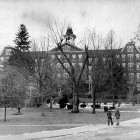
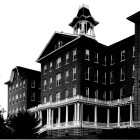
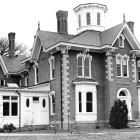
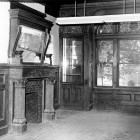
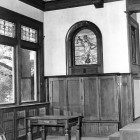
Leave a Reply